0 Comments
Being an artist is a journey filled with passion, creativity, and self-expression. However, along this path, many artists experience a common hurdle: imposter syndrome. Whether you're an aspiring artist, a seasoned professional, or simply curious about the creative world, this insightful exploration will shed light on this psychological hurdle that many artists face. What is Imposter Syndrome? How Does it Affect Artists?Imposter syndrome can be a common struggle among artists, leading to self-doubt and hindering creative growth. However, it's essential to recognize that many successful artists have experienced these feelings at some point in their careers. This nagging feeling of inadequacy and self-doubt can hinder artistic growth and dampen the joy of creating. But fear not! In this blog, we will look at identifying and managing imposter syndrome and explore five tips to help you overcome and boost your confidence as an artist. How to Identify Signs of Imposter Syndrome as an Artist?
As an artist, it can be difficult to identify when you're suffering from imposter syndrome. We all have moments of self-doubt and insecurity in our creative pursuits, but when these feelings become pervasive and start to affect our work. It is important to recognize the signs so that you can take steps to address them and move forward with your art.
Some signs include:
Also read- Art Marketing: Creative Tips and Strategies to Promote Your Art 5 Tips to Help Overcome Imposter Syndrome and Boost Your Creative Self-Confidence1. Embrace Vulnerability:Artists often fear judgment and criticism, but embracing vulnerability is crucial for personal and artistic growth. Recognize that sharing your work is an act of courage and authenticity. Remember, art is subjective, and not everyone will resonate with your style or message. Focus on expressing yourself genuinely, without the need for external validation. Embracing vulnerability allows you to create art that is true to your vision and fosters a deeper connection with your audience. 2. Celebrate Your Progress:Imposter syndrome often leads artists to discount their accomplishments and attribute their successes to luck or external factors. Instead, celebrate your progress and acknowledge your achievements, no matter how small they may seem. Keep a journal or a visual record of your artistic journey, including completed projects, positive feedback, and personal milestones. Reflecting on your growth will remind you of your skills, dedication, and the progress you've made as an artist. 3. Surround Yourself with Supportive Community:
Connecting with fellow artists and joining supportive communities can be immensely beneficial to build confidence. Seek out art groups, forums, or local meetups where you can share your experiences, challenges, and successes with like-minded individuals. Surrounding yourself with a supportive network of artists who understand the creative process can provide encouragement, constructive feedback, and a sense of belonging, helping you overcome self-doubt.
“We encourage you to join our vibrant community of cowgirl artists, where you can connect with other talented women artists who understand the challenges and triumphs of the creative journey. Share your experiences, seek advice, and celebrate your achievements together. Join us today and let's inspire and uplift one another on this incredible artistic adventure!”
Also read- Importance of Community for Artists
4. Embrace Continuous Learning:Art is a never-ending journey of growth and exploration. Invest time in expanding your artistic skills and knowledge through workshops, classes, online tutorials, or mentorship programs. Remember that even the most established artists continually seek new techniques and inspiration. By nurturing a growth mindset and focusing on improvement, you can overcome feelings of inadequacy and develop confidence in your abilities. Artist Pro Tip: Remember that every part of your journey is valuable, even the parts that feel slow and unsuccessful. You are building something great, and that can’t be done overnight. 5. Shift Focus from Comparison to Inspiration:One common trigger is comparing oneself to other artists. Instead of falling into the comparison trap, focus on finding inspiration from other artists' work. Study the techniques, storytelling, or unique styles of artists you admire. Rather than feeling inferior, use their work as motivation to explore new possibilities and experiment with your own artistic expression. Remember, each artist has a unique voice; your journey is yours alone. Artist Pro Tip: Remember inspiration and imitation are two different things. You can learn and be inspired by looking at the work of other artists, but at the end of the day, you must develop your own voice and style. To wrap up
Imposter syndrome can be a formidable obstacle on the artistic journey, but it doesn't have to define you. By embracing vulnerability, celebrating your growth, seeking a supportive community, embracing continuous learning, and shifting focus from comparison to inspiration, you can conquer this psychological occurrence and reclaim your confidence as an artist. Remember, you are unique, and your art has the power to touch lives and evoke emotions. Embrace your artistic voice, and unleash your creativity.
Have you ever said, “I shouldn’t have to market my work? It should speak for itself.” If so you aren’t alone, but this is a rookie mistake. If you're an artist looking to build a business, you must understand the importance of art marketing. Sometimes artists feel like “marketing” is a bad thing. But marketing at its best is a way to connect with the right people and help people determine if your work is or isn’t for them. Marketing isn’t about manipulation and hard sales, marketing is about connection and clarity. Effective marketing strategies can help you showcase your art, reach a wider audience, and achieve your artistic and financial goals. In this blog, we'll discuss five art marketing techniques and creative tips and tricks to help you promote your art effectively. Recommended for you- Trust The Process And Embrace Your Artistic Journey Importance of art marketingArt marketing plays a crucial role in the success of an artist. Without effective marketing strategies, even the most talented artists may struggle to sell their work or gain recognition in the art world. Here are some reasons why art marketing is important:
Recommended for you- Importance of Community for Artists 5 Art marketing techniques
1. Understand yourself and your artwork: Every artist has their own unique style and perspective, and understanding yourself is the key to unlocking your creativity. Learning to identify your personal motivations, influences, strengths, and weaknesses can help you create meaningful artwork that resonates with your audience. By exploring who you are as an artist and what drives your work, you can unlock a new level of depth in your art that will move other people. If you don’t understand yourself and your work your marketing and message will be all over the place and you will water down your work and lack cohesion. "I know now that most people are so closely concerned with themselves that they are not aware of their own individuality. I can see myself, and it has helped me to say what I want to say—in paint." -Georgia O'Keeffe 2. Identify your target audience: Knowing your target audience is crucial for any artist. By understanding who you are creating for, you can tailor your art to their needs and interests. It’s an important step in creating a successful art career - so take the time to get to know your potential customers. Artist pro tip: Creating work for your target audience sometimes ruffles artists' feathers. “I just want to create what I want, how I want it..” It’s another form of “the work will sell itself.” Your artistic voice and vision are very important and integral to your success as an artist. But if you know who your audience is, and it is the right audience for you that doesn’t mean you are creating work you don’t want to create just to please them. It means that you have connected with collectors that value your work, and it means you are in touch with what is popular among your collectors when it comes to your work. For example, maybe you are a wildlife painter and you know that your collectors buy a lot of mountain lion paintings, so you make sure to plan for several mountain lion paintings because you are confident they will sell. You don’t change who you are as an artist, and you don’t try to copy someone else, you just know that your mountain lions are selling well among your collectors, so you make time to paint some mountain lions. It’s about tapping into your business and planning strategically.
3. Develop your brand: Developing a strong brand is essential for any artist looking to succeed in the competitive art market. Your brand should reflect your artistic vision, values, and personality, and be consistent across all your marketing channels, from your website and social media profiles to your exhibition materials. This helps your audience identify you easily no matter what platform they are on and helps you appear more professional (as long as your materials and platforms are well-designed).
Recommended for you- Importance of Branding for Artists 4. Utilize social media: Instagram, Facebook, and Twitter are very powerful social media tools for promoting your artwork, building a fan base, and connecting with potential buyers and collectors. Make sure to post high-quality images of your artwork, engage with your followers, and utilize relevant hashtags that can help increase your visibility and grow your following. 5. Participate in art exhibitions and art fairs: Art exhibitions and art fairs are great platforms and provide valuable opportunities to showcase your work and network with potential buyers and collectors. Participating in these events can help you increase your exposure, gain recognition, and make valuable connections in the art world. Artist pro tip: These are also a great place to grow your mailing list! Creative Art Marketing Tips and Tricks
ConclusionIn conclusion, art marketing plays a critical role in an artist's success. By implementing creative tips and strategies to promote your work, you can increase your exposure, build a strong brand, and reach new audiences. From hosting virtual exhibitions and collaborating with other artists to optimizing your websites and utilizing social media, there are many effective ways for you to market your art. By continuously upgrading your skills, creating an artist statement, and participating in art competitions, you can stay relevant and competitive in the industry. With dedication, perseverance, and a strategic marketing plan, you can take your art to new heights and achieve your goals. What Does It Mean To "Trust the Process"?You’ve probably heard us say this mantra a lot. That’s because it is at the core of embracing your artistic journey (and life) in a way that allows growth without shame and judgment. In fact, allowing, not forcing is a big part of being able to enjoy your artistic journey more. "Trusting the Process" is about allowing yourself to be where you are, to be open to learning, growth, creativity, play, and even mistakes. Trust us, if you are working consistently you are learning and you are growing, even if you feel like you aren’t. Give yourself a break, enjoy the ride, and remember we all start somewhere. Trusting the process allows you to let go of self-doubt and open up to gentle learning and growth. Trusting in yourself and the creative process will help you unlock your true potential as an artist. 6 Things That Every Artist Struggles WithEvery artist faces unique struggles that can prevent them from achieving success in their creative journey. But, it is essential to remember that these struggles are a part of the process and can help you become a better artist. Here are six of the most common things that every artist struggles with. 1. Fear of failureIt is common for all artists, but failure is a good thing! It is directly proportional to success, and is proof that you are getting out there and trying to make things happen! There’s no such thing as failure- only learning experiences. Instead of giving up after a perceived failure, gently consider what you can learn from the situation. You may want to do this by writing a list of why you “failed” and what caused the “failure.” You could also journal about your experience, talk through it with a friend, or make a plan for improving next time. Once you know why you failed, it is much easier to improve and gain success in the future. Remember that every “failure” is a chance to learn something new! Pro Artist Tip: When you really doubt yourself, and fear of failure is paralyzing you, remind yourself, “I can handle this. I can find creative solutions if I encounter a problem. I can be flexible and I can learn.” Also, keep in mind that at the moment failure feels very big, but imagine a month, year, or five years down the road- does it still matter so much? If it doesn’t, try not to waste too much time worrying about it. Everyone experiences failures. 2. Self-doubt and self-criticismMany artists are prone to doubting their work, but you should understand that this will affect your creative process. Being an artist is not just about the work, it is the result of your heart and soul thoughts. Try not to compare yourself with other artists. You may find their work and journey inspirational, and learning their strategies may help you improve your work or career. Just remember that each artist is on their own journey, and that includes you. Honor your journey as your own. When you get stuck in a cycle of negative thinking see if you can replace your negative thoughts with a positive mantra. You may also want to remind yourself of whatever successes you’ve had so far. If you find that you are constantly in a negative headspace and always hard on yourself, it may be worth seeking out support from a good therapist, who can give you strategies for working through negative self-talk. Our thoughts influence our reality, so ensuring that your thoughts are influencing your reality in the right direction is very important. 3. Difficulties with pricingThis one may seem a little off-topic, but pricing your work is part of the artistic journey because it is something that changes as your career grows. Working through pricing can be stressful, confusing, and sometimes discouraging for artists. It can be particularly challenging when you are first starting out, and when your career begins to grow. Artists face trouble setting the right price for their work, as it can be difficult to determine what the market will bear. You should consider the following points while deciding the price:
Pro Artist Tip: Do not list prices on platforms like Instagram. Instead include a link to the piece on your website. That way if you do raise your prices the updated price will always be reflected. If someone wants to know the price of a piece you can tell them you will send them a DM. You can then tell them the price in the direct message or you can share the link with purchasing information. 4. Cultivating a growth mindsetCultivating a growth mindset can be incredibly beneficial for your life and career, as it keeps you from getting discouraged when you face challenges or failures. Cultivating a growth mindset is an important skill for growing your career and not giving up. (It also helps you feel better about yourself along the way. Really, there’s no reason to beat yourself up!)
5. Developing a creative routineIt can be very difficult to develop a creative routine for artists. But, a creative routine will help you develop your skills, stay focused, and make progress on your artistic goals. Creative routines should be tailored to the individual artist, as everyone has different needs and goals. It should include time for things like making art, brainstorming new ideas, researching techniques, experimenting with various media, and spending time with people who inspire and motivate you. Additionally, it is important to set aside time for relaxation and self-care to keep up with your creative energy. A creative routine that works for you, will help you create more work with focus and enthusiasm. Pro Artist Tip: Find out when is the best time of day for you to get business work and artwork done. Then, make your schedule accordingly. (Work with yourself, not against yourself. 6. Overcoming creative blocks
Have you ever experienced creative blocks in your career? Don’t worry! This is a common experience for every artist. Creative blocks manifest as:
Pro Artist Tip: Even when you have a creative block you can rely on your skill to continue to produce work. Art is not all about inspiration and motivation (see below). Sometimes it is just setting down to do the work. At the same time, don’t forget to listen to yourself. Is your body telling you you need a break? Is your brain telling you that you’re getting burned out? Make sure to listen to yourself and create a healthy plan of action. 8 Effective Ways To Overcome Artist Struggles:
Here we have listed 8 effective ways to help you overcome artist struggles: 1. Self-care: It is an essential part of an artist's life. Yes! You should make some time to care for yourself. Make sure to eat nutritious food, participate in regular exercise, etc. This helps you stay focused, create better art, and run your business with more enthusiasm because you don’t feel run down and your brain is happy. Recommended for you- 5 Quick Tips For Nourishing Your Body When You Are Busy and Overwhelmed 2. Setting reasonable goals: Setting goals can also help you stay on track. Writing a to-do list or mapping out a timeline of what needs to be done can help you prioritize tasks and make sure that you are staying on top of things. Creating a plan and sticking to it will help keep your productivity high while also not piling on too much at once. It also gives your brain a break from constantly trying to figure out what you should be doing. 3. Inspiration and Motivation: Inspiration is more about the artist's feelings that spark creativity while motivation is the feeling or driving force to turn an idea/inspiration into something. It is not easy for artists to stay motivated and inspired every day. When it comes to art making, inspiration and motivation are only part of the equation. To truly master your craft, you need to establish a dedicated work routine that is not dependent on inspiration or motivation. That means even if you don't feel inspired or motivated on a particular day, you still show up and do the work. It may feel harder to put in the work these days. However, you can learn how to create and follow a reliable routine so that you maintain consistency for your art-making and your business. It is a misnomer that successful artists feel constantly inspired and motivated. There is an idea of an artist staying up at all hours of the night creating because they just can't stop, they have to get their inspiration out. While this is true sometimes it is not true all or even most of the time. If you want to be a successful artist you can not wait for "inspiration to strike." It is the same with motivation. You may feel totally unmotivated to do your work (art or business). It doesn't matter. If you want to be successful it is about showing up consistently to your art practice and your business. Disclaimer: Maintain a healthy balance between work and personal life. It is important to note that sometimes you feel unmotivated because you have been working too hard and need a break. Taking breaks is important for your long-term success as well. Pushing yourself to the point of burnout will cause you to lose more time than taking periodic breaks. Plus taking breaks (including days off) allows your brain to be more creative! 4. Join a supportive artistic community. By joining an artist's community, you can ask for tips and ideas from experienced artists to grow your career. It can help you to explore and expand your artistic skills. Learning new techniques and exploring unfamiliar media can help keep the passion alive and give you a boost of inspiration and excitement about your work. Recommended for you- Importance of Community for Artists 5. Get feedback from trusted sources: Ask people you trust and admire for their opinion on your work. Feedback can be a powerful tool in helping you refine your ideas. Remember, you don’t have to be afraid of constructive criticism because it is an opportunity for you to grow. Artist Pro Tip: Be careful who you seek advice from. People who don’t know art or the art industry may give well-meaning, but ill-informed advice. Also, be wary of people who try to cut you down. There is a big difference between constructive criticism and hurtful comments. If you recognize that you start feeling bad about yourself, or overly doubtful about yourself when you talk to someone, start paying attention… it might mean you need to go to someone else and avoid asking that person for advice.
6. Focus on the present: Don’t worry too much about the future. It is out of your control. Work on improving your craft every day and trust that your efforts will pay off in due time.
7. Don’t rush it: Creative projects often take time and effort. Celebrate your successes and don’t be afraid to make mistakes. Mistakes can often lead to happy accidents. Remind yourself that everyone starts somewhere and there are no shortcuts. 8. Let go of perfectionism: No one is perfect. Trying to be perfect and letting fear of imperfection is a total waste of your time, and will do nothing but hold you back. Just go out there and do the work. It’s okay to have high standards, but don’t get stuck because you can’t be perfect. Remember progress is not perfection. Trusting Process Can Help You Reach Your GoalsReaching your artistic goals can be a daunting task, but trusting the process can help you get there. It’s all about finding joy in the journey. That means having faith in yourself and your skills, as well as understanding that you need to take the necessary steps to achieve success. It also involves accepting that there will be bumps in the road and learning from mistakes along the way. It means being okay with not being where you want to be, but putting in the work to get there. We understand you won't always have energy, inspiration, and motivation. But, trusting the process is essential for any artist who wants to reach their goals and create something meaningful. With trust in yourself, you’ll have more confidence in taking risks and pushing yourself to do better work. It’s easier to fall in love with your art without fear and criticism when you trust the process. Overcoming your fears can also help you advance in the process. Fear of failure can be paralyzing, especially when it comes to creative work. Facing your fears will allow you to make strong decisions that may save you a lot of pain down the road. It’s always better to be clear-headed and rational than overwhelmed with fear, so stay calm and think rationally about what steps need to be taken next for you to succeed. Remember to embrace where you are, be realistic, and be gentle, but take your work and career seriously, and don’t be afraid to push yourself too. Trust the process of your artistic journey and have faith in yourself and your abilities. With the right mindset and strategies, you can achieve amazing things! Don't miss out on the opportunity to become a member of Cowgirl Artist of America. Membership enrollment is now open until April 30th, and April is the only month when we accept applications for Signature Members.
Applying for the opportunity to participate in an art show or gain access to grant money can be really hard. Decision makers accept your applications based on many factors, including your artwork, your art style, the appearance of your application, and many more. When applying for calls for art you need to take the time needed to present a professional-looking application. This may feel time-consuming, but in order to avoid preventable rejections you need to take the time to do it right.
Quick note: For ease of writing this article we use the term “art shows,” but this can refer to fairs, events, exhibitions, and even memberships and grants. Tips To Improve Applications For Art ShowsMake Sure The Art Show Is A Good FitWhen you are looking at art show applications, it is important to make sure that your art is a good fit for this opportunity and that the opportunity is a good fit for you. For example, do not waste your time applying for an art show that showcases very traditional work if your work is more contemporary. Applying for shows can get pricey and time-consuming, so you need to have a strategy for choosing which shows are a good fit and will be most beneficial. Always check the following points:
Recommended for you- Importance of Branding for Artists
Know the requirementsBefore beginning the application process, it is important to be aware of the requirements for the art show. Do research on the art show and jurors or curators. This can help you understand if it is worth your time to apply. Each art show application has different requirements, so it is important to read the rules carefully and be sure to meet all the criteria. To increase your chances of acceptance you may want to customize your application for specific shows. A few requirements that are generally included in all art show applications are
Present your work and application in a professional manner.Once you understand the requirements of the show, the next step is to fill out the application. Many organizations use websites like CAFE or ArtCall.org. These can be helpful because they save some of your information from previous applications so you aren’t constantly uploading artist statements, etc. Make sure you understand the specification of the application. If you do not follow the application instructions you may be disqualified from having your work presented to the juror, or it may count against you in the final decision-making. It is essential that your application is presented in a clear and professional manner. Some events are stricter than others, but if you are a professional you should present yourself in a professional manner. That includes reading through the prospectus, following any rules, and submitting a professional-looking application. Some prestigious and selective shows and memberships require the utmost care and attention to detail. Remember, competition can be high, and it is up to you to present yourself and your work professionally. Recommended for you- Why Is Goal Setting So Important For Artists? How To Set And Stay Organized With Your Artistic Goals? To Wrap UpApplying to an art show can be both scary, exciting, and daunting; but being accepted can be a huge boost to your career. There is no guarantee that you will get into a show. In fact, rejections are just part of being an artist… really! No matter what happens, keep trying, keep improving, and keep growing. Rejections happen for all kinds of reasons, including juror preferences, available space, etc. Most shows do not give you feedback, but if you do receive feedback consider it with an open mind and see what you can learn from the feedback. Whatever you do, don’t get discouraged, keep applying, keep working, keep going. Perseverance and determination are key. We’ll even share a few more tips to help along the way:
We know applying for a show can be stressful. We hope this article will help you feel more confident and better equipped to apply for the right art shows for you. We wish you all the best!! Do you have any other tips for applying to an art show? Drop your comment!! Special Announcement For Members: Want to dive into the nitty-gritty of applying for shows and grants? We will be hosting a Panel discussion on March 2nd at 3:30 Pacific. RSVP in the member portal. What is WILD FLOWERS?Wild flowers Western Art Show is an exhibition and sale of the finest works of western art created by today’s cowgirl artists. Wild Flowers is Cowgirl Artists of America’s annual show and is presented in conjunction with Western Art Gallary. Fun Fact: The show title, “Wild Flowers” was inspired by a Dolly Parton song “Wildflowers,” and pays homage to female artists past and present. Wild Flowers Art Show DatesThe show and sale will be live, online, with work for sale, beginning February 1, 2023. The sale will close on February 28th, 2023. The opening reception and awards ceremony will be Saturday, February 4th at 5:30 PM (Central) on Instagram Live with Western Gallery and Cowgirl Artists of America. Jurors for the Western Art Show
We are grateful to the three Jurors for the 2023 Art Show:
1.Mark Sublette (Medicine Man Gallery) Dr. Mark Sublette is the founder (1992) of Medicine Man Gallery based in Tucson, Arizona. He is a sought-after speaker on Western and Native art, a creator of various catalogs within the field, and a specialist on the craftsmanship of Maynard Dixon. 2. Lisa Staudohar (Art of the West Magazine) Lisa Staudohar is a sales and business development executive at the Art of the West Magazine. She is a creative problem solver, expert relationship builder, and strong strategist. Staudohar works hard to build relationships with the movers and shakers in the western art world. Click here to learn more about Lisa Staudohar. 3. Diana Vela (National Cowgirl Museum and Hall of Fame) Diana Vela is an Associate Executive Director at the National Cowgirl Museum and Hall of Fame. The National Cowgirl Museum and Hall of Fame respects and celebrates women, past and present, whose lives exemplify the courage, resilience, and independence that helped shape the West, and fosters an appreciation of the ideals and spirit of self-reliance they inspire. Artists list Participating for the Western Art ShowAlly Morgan Amber Scally Audrie Mergelman Betty Polasek Brittany Colt Burneta Vendosel Cheryl Harley-Volz Dana Lombardo Danuta Tomzynski Debbie Hughbanks Eileen Nistler Georgia Pollock Jean Hildebrant Jennifer Wendt Jenny Buckner Joye DeGoede Kay Kaplan Kaye York Kellee Mitchell Kelsey Koprowski Kim Hunter Steed Kristi Rose Kwani Povi Winder Lauri Ketchum Laurie Kersey Lynn Shield Manjushree Roy Megan Wimberley Mejo Okon Michelle Kondos Molly Lawson Nancy Rynes Natalie Campbell Nettie Rickerson Peggy Judy Rose Collins Sarah Webber Shari Michaud Shelly Vandermeulen Sherry Cobb-Kelleher Simone Silva Susan Humphrey Tammy Liu-Haller Tina Roy Tracey Goff Trish Stevenson Vanessa Rusczyk Victoria Gilmore Winners of the Wild Flowers Western Art ShowWe are happy to congratulate Cheryl Harley-Volz and Audrie Mergelman! the most deserving winners of the show
Also, we are grateful to our sponsors, Art of the West Magazine and Sarah Smith Silver for sponsoring the WILD FLOWERS Western Art Show, and to George and Western Gallery. Without their support it would not be possible to arrange such a wonderful show. Thank you so much!!
Want to apply for Wild Flowers 2024 or participate in other CGA events? Sign up for the newsletter and follow us on Instagram to stay up to date. Why Is Community So Important for Artists?Running an art business is difficult and can be overwhelming. It is especially easy to feel discouraged, lost, or frustrated when you feel like you are all on your own. When you have a good community you can seek out guidance and advice from successful artists who have navigated the same challenges. By building a network of peers, you can gain valuable insights into the many aspects of running a successful art business such as marketing, pricing, distribution, and more. Achieving your artistic goals can be so much easier with the right guidance from a community of experienced Artists. The artist community is a powerful force for creativity, collaboration, and inspiration. It is an invaluable resource for artists of all disciplines to come together and share their ideas, learn from each other, and find new ways to express themselves. An artist community provides a platform for artists to connect with one another, exchange knowledge and experiences, and build meaningful relationships. The value of this really can’t be overstated. Here are some of the benefits of having a good community for artists. Access to the Group’s KnowledgeThe artist community is a valuable source of knowledge and creativity. By providing access to the group’s knowledge, you can benefit from the members' collective wisdom, share ideas more easily, and sometimes even work on projects together. With access to a larger pool of resources, you may find that you are better equipped and connected in ways that help you expand your business further. By connecting with other artists, you can also gain a better understanding of your craft and hone your skills. This access to the group’s knowledge can help you to become more successful in your endeavors. Pro Artist Tip: There is a sweet spot between ego and lack of confidence. It’s important to have enough confidence that you know what advice/feedback/critique you should leave behind, while also not letting your ego get in the way so you miss advice that could help you grow. NetworkingNetworking is an essential skill for any artist. It allows you to build relationships with other artists and professionals in the industry, as well as to promote yourself and your work. With the right connections, you can gain access to resources, opportunities, collectors, and collaborations that can help you reach new heights in your career. Through networking events, workshops, and online conversations, these communities provide invaluable support for aspiring artists who are looking to make their mark in the industry. FriendshipFriendships are essential for artists, as they provide support and motivation to pursue their creative goals. Artist communities are great places to find like-minded individuals who share the same interests and passions. Within these communities, you can connect with each other and form meaningful friendships. Through these friendships, artists can learn from one another, collaborate on projects, and grow together. Strong friendships help keep you inspired and accountable. Ultimately, artist communities provide a platform for people with similar interests to come together and form these strong friendships. Support & encouragementBeing an artist is a challenging and unique career path. Often standards business resources and advice aren’t geared toward artists and frequently leave artists feeling like there is a piece missing. When you have a strong art community you are able to access support and encouragement that comes from a place of knowing. Advice you receive in artist's communities is advice that is geared directly towards or comes from artists. Further, when you are just “going it alone” it is easy to get discouraged or let your goals slide. Having a community of peers and mentors helps you to stay on track and get support from people you know. Suggested for you- The Complete Guide to Creating an Artist Newsletter InspirationInspiration is fickle and you can’t rely on it to be a professional artist. You have to do the work whether you “feel inspired” or not. The type of inspiration an art community provides is something different. This inspiration comes from seeing other artists on their journey and feeling inspired and encouraged to push out of your comfort zone or to keep going when you just don’t feel like it. Artist communities provide a platform where artists can come together and create something that is bigger than themselves- a place of belonging and support. Increases sales and productivitySales and productivity are two things that a lot of artists really struggle with. Many experienced artists in the community are happy to share their knowledge about how to improve sales and productivity which may help you sell your products or find better approaches to productivity. This advice from the members of the community can be invaluable. Pro Artist Tip: When seeking out an artist community look for a community that shares your values and is relevant to your genre. With a community relevant to your genre you are more likely to find resources and connections relevant to your work. Conclusion
Having a strong community is essential for you to achieve success as an artist. You need to be able to connect with other artists and share ideas, and resources, and support each other. A strong artist community can provide the support they need to stay motivated and continue creating art. It can also help you find opportunities to collaborate with other artists or showcase your work. Moreover, having a strong artist community can help you grow your audience and promote your work more effectively.
If you are interested in joining (in our opinion) one of the best artist communities you can join Cowgirl Artists of America for our special AOTC enrollment, Jan 18th-31st, 2023. Suggested for you- Top 7 Bookkeeping Tips and Tricks for Artists
First of all, we want to wish you a Happy New Year 2023!
As an artist, have you thought about goal setting to improve your career? If you haven’t taken time to establish artistic goals you’ll want to read on. We will share some inspiring goal-setting strategies to help you grow your career or business. Maybe you have already worked on setting your Artistic Goals, but you struggle with actually achieving those goals. This article will have some tips for you too. When working on your goals it is important to have a lot of patience and passion, while staying motivated. Having goals with proper strategies, and a supportive community can make a big difference in your career. Why Is Goal Setting So Important For Artists?Goal setting provides you with a sense of purpose and direction in your work and therefore increases productivity. It also helps you to stay motivated and focused in your career. In order to set artistic goals, you should consider what you want to achieve in your career or business. You should also focus on what you want to produce as an artist, such as the number of paintings in a year, or any big projects. Setting and tracking goals can also help you identify weak or underperforming parts of your art business so you can make a plan to improve. Recommended for you- How To Be Productive When Working From Your Home Art Studio At CGA we always remind artists that running their business without a plan or goals is like setting out on a trip without a destination. You might accidentally get somewhere cool, but most likely you will end up somewhere terrible, or mediocre. What Good Goal Setting Looks Like “Smart?A goal like “completing a piece every week” or “selling 50 paintings this year.” may be achievable for some, but for others, this would be unrealistic. We all have different capacities and resources, and it is important to be aware of those. Most of the time people set goals but then fail to achieve their goals. One reason is that they haven’t set SMART goals. SMART goal setting is a popular technique for setting and achieving your goals. SMART stands for Specific, Measurable, Achievable, Relevant, and Time-bound. These are the five important characteristics of good goal setting. Specific: Your goal needs to be specific. It should be clear what the goal is and what you want to accomplish. Measurable: Always remember to set measurable goals so that you know if you are achieving them. This can also include milestones for the goal. Attainable: You know your capacity, right? You know how many paintings you can create in a month. Based on your ability and resources, always set goals that are achievable for you otherwise, there is no point in setting them. (It is okay to push yourself, but just remember to be realistic.) Relevant: The goal needs to be relevant to your business direction, values, and interests. Time-bound: Goals need a time limit or they will never get done. Here’s an example of a SMART Goal: “I will maintain a business account for my artwork on Facebook and Instagram. I have to post at least 3 posts per week. I will start with one post per week and increase this by one post per week for the next 2 months.” Pro Artist Tip: Goals that are important, but reoccur (so it feels like there is no time limit) can be broken down into years or quarters. Recommended for you- How To Collect Reviews For Art Websites and Social Media? How Do They Help? How To Determine What Artistic Goals To Take On And What To Let Go Of?
Maybe you have a ton of goals that feel important to you, or you just don’t know where to start. The first step in deciding what goals to take on is to determine your priorities. To prioritize, you identify your goals and then rank them by importance. If you are struggling to narrow down your goals, you might find it helpful to create a list of all the things that you want to accomplish and then start ranking them by how important they are or which are the most timely.
The next step is to take a look at the list and identify which tasks are going to propel your business forward, in the direction you want it to go. If there are any tasks on your list that don't fit into your priorities, it's time to let go of those goals for now. Put an X next to them. There may be a lot of goals that are important to you, but you have to narrow them down to what you can actually accomplish. If you have a lot of important goals try separating them out into years, months, or quarters. Remember, you don’t have to accomplish everything at once. What is the next logical step? If you are a new artist, it may not be possible to start teaching workshops. However, this goal can be achieved in a few years. Set it aside for now and work on the next most logical goal, at this moment. Pro Artist Tip: If you are really struggling to let go of goals, have one page in google docs or a notebook where you idea dump all your goals. Often we are just afraid of forgetting something, but as we move forward we may realize some of the goals are not necessary and we can let them go. If they continually seem important then you can come back to them when the time is right. How To Track And Stay Organized With Your Artistic Goals?
Being an artist you may have the freedom to create art on your own time and handle your business as you like. But it is a business, and you need to keep track of your goals and stay organized with them if you want to make significant progress. Here are some tips that are helpful to keep track of and stay aligned with your goals!
“Change your life today. Don't gamble on the future, act now, without delay.” — Simone de Beauvoir Conclusion and Wrap-UpAs an artist, you may face a lot of challenges in your field. But, you can overcome those challenges, identify problems, and set your SMART goals with the proper goal setting strategies we shared today. Good goal setting can help you see tremendous success in your career! Have you made any artistic goals list for this year? Drop the list in the comments below! I love to hear from you. Do you have your home art studio? Great!! Having a home art studio is a great way to save money and time. When you work from your own home studio, you have the ability to work on your schedule, set your own hours, and freedom to create your artwork without any interruptions. However, this freedom can also make it difficult to stay productive and efficient. There are many factors that can contribute to a lack of productivity such as the lack of a reliable schedule or structure, not having anyone to report to, and not having any deadlines. The trick to being productive in your home art studio is to set up a space that is both comfortable and inspiring. You should also have all of the tools and materials you need on hand. Let’s explore ten ways to stay productive in your home art studio. 10 Ways to Stay Productive and Efficient in Your Home Art Studio1. Create a schedule and stick to itWhen you're working, it's easy to get distracted and waste time. The best way to address this is by creating a schedule for your day and sticking to it. Do not decide on the spot what work to do! Creating a schedule for your day can help you reduce distractions and stay on task. Scheduling time for tasks like creating artwork, checking email, making phone calls, or getting lunch will free up your time to do the things that are important. Manage your time effectively by setting specific goals for yourself so that you know what your priorities are when it comes to completing tasks. No one is there to monitor your work, you are your boss! But, do not use this as an excuse or distraction. In order to stay focused and become productive at your in-home art studio it is important to maintain a schedule for your work. Artist Pro Tip: Always remember that you are a business owner. It can be easy to let your art/business be put on the back burner while you do all the other things that pop up while working from home. There will always be home-based tasks that need to be done and it’s not uncommon for artists working in a home studio to get distracted by laundry, errands, random phone calls, etc. Set boundaries around your time. Respect your work time and expect others to be respectful of that as well. 2. Take Care of Yourself by Eating Well and Sleeping WellMake sure that you're getting enough sleep and eating healthy food while working on your work in order to stay energized and focused throughout the day. Eating well and sleeping well will help you perform better at work. It will also improve your mental health which is vital for creativity. Sleep deprivation can lead to a lack of focus, irritability, and impaired decision-making skills. Eating the right foods can help you sleep better and feel more energized during the day. A car can’t run without fuel, and neither can you. Handpicked for you- 5 Quick Tips For Nourishing Your Body When You Are Busy and Overwhelmed 3. Invest in Tools That You Can Use AnywhereThe tools that you use in your day-to-day work should not be limited to your office desk. You should be able to use them anywhere, anytime. There are a lot of tools out there that can help you with your marketing, sales, and other business needs. But not all of them are worth investing in. The ones that are worth investing in are the ones that you can use anywhere and anytime. For example, if you have a tool for making presentations on the go or for editing images on your phone, it can be a worthwhile investment because it will make your life easier and more efficient. The added benefit is that you won’t be caught off guard, you will have what you need at your fingertips. Artist Pro Tip: Use a digital calendar- even if you are a person that likes to write things by hand. A digital calendar enables you to check your schedule and add important items to your schedule on the go. You can access this from your phone, laptop, or tablet. Forgot your phone? You can sign into your account on another device to make sure you don’t miss any important opportunities. 4. Always maintain your website
A website is a platform that allows you to share your work with the world. Having your website not only increases your reputation but also helps you to connect and communicate with people throughout the world.
Being an artist, you need to have a website where you can display samples of your artwork and their prices, share your own story, and can provide valuable information. If you establish your online presence you can attract a large number of followers or customers, strengthen your artistic brand, and lead to more profit by selling your artwork through your website. Handpicked for you-How To Collect Reviews For Art Websites And Social Media? How Do They Help? 5. Make Social Media Work For YouSocial Media is a powerful platform for artists who have a home art studio. Social media is a great platform to market yourself as an artist free of cost. You can build trust and reputation through unique posts/content. Remember, your post should be fresh, creative, and authentic so as to attract more followers and likes. Do not expect to become well-known overnight. Make sure to post consistently, as it is an effective way to attract more followers and customers. This leads to more sales and business growth. When done right social media can be a tool for productivity. 6. Create an environment that inspires creativity and productivityThe trick to being productive in your home art studio is to set up a space that is both comfortable and inspiring. Have a space that is just for your art. This can be a room or an area of your home where you can leave all your supplies and materials so they don't get lost or mixed up with other things. Make sure you have plenty of light, good ventilation, and a clean workspace. Having a clean workspace will also keep you away from being distracted by other things around you. 7. Take breaks when neededTake some time out of the day for yourself so that you can recharge and focus on other things outside of work as well. If you work continuously without any breaks it can ultimately slow down your energy and lessen your productivity. Do not underestimate the power of small breaks. They can refresh your mind and also your body. Always make sure that you take a break of at least 5 minutes after every hour of work to clear your mind, stretch out your tired muscles, and stay hydrated. (This is also important for keeping your body strong and healthy. Continuous art making can sometimes result in sore, tight muscles, poor posture, and even carpal tunnel syndrome!) 8. Make sure you have everything you need for your workKeep all the essential materials required for your work organized and accessible. It helps you to find them with ease if you need something else later in the day or week. Placing all the materials in one place saves time and energy. Make sure to spend some time keeping all tools back where they belong. That helps to get back to work directly without having to think about finding the tools. If you are constantly stashing your supplies in closets and boxes it can decrease your productivity. If you have to find time for set up and tear down each time you work, you will eat into your art-making time and may find yourself doing something else instead. Solve this problem by creating a space where you can easily access the things you need most often. 9. Get Out of the House!As an artist, you need to go out of your home, change your surroundings, spend time in nature, visit different places, meet other artists, and attend events and exhibitions. That helps to gain inspiration, and ideas, boost your creativity, expand your network, and motivate you to create new forms of art and stay successful in your field. 10. Set deadlinesYou are the boss in your home art studio! Nobody is there to set deadlines for you. So you need to manage your schedule well. Set the time for each work and meet the deadlines you set. A good schedule will help you to create art more efficiently and to adequately plan for any commissions, shows, or sending more work to your galleries. If you do not set any deadlines it’s easy to slack off or get really behind. When you have clients waiting for work, this can also result in a poor reputation and loss of collectors. ConclusionHaving a home art studio is a great idea! However, you need to concentrate on productivity. In order to stay productive and efficient, you need to prepare a schedule for your work, keep tools organized, set realistic goals and deadlines for yourself, and visit new places to get inspiration. Also, you should be mindful of your health by eating properly, sleeping well, and taking breaks. And finally, you should find ways of getting outside your home to collaborate with other artists and/or expand your network through meetups, events, and exhibitions. If you are a member of Cowgirl Artists of America, we have many great resources for you to expand your network and get involved with your community! Click here to become a member of CGA Introduction
In today’s world reviews are essential to the success of art businesses like other businesses. Having a good number of reviews for art businesses will help to build trust and attract more customers and clients. Reviews can help you build your reputation as an artist while helping potential customers make decisions about what they want to buy. Reviews are an integral part of any art website or social media. They allow people to see what other people think about the art and if it is worth investing in.
Websites and social media thrive on reviews because they provide a way for artists to receive feedback on their work and determine if they want to make changes that could benefit their business. Reviews also provide artists with a way to gain more attention from potential buyers. Reviews are important because they show the artist’s work in different lights. Reviews can help artists improve their craft by seeing what works and what doesn't. Recommended for you-Importance Of Branding For Artists 6 Tips to collect reviews for art websites and social media accounts1) Ask politely:
It’s always a good idea to ask politely if people want to review your work. You can do this by sending a message on social media or by emailing them directly. It is the best practice to send an email to customers who have purchased your artwork. First, you should thank them for purchasing the product and after that, you can ask for their feedback about the artwork. If they have bought multiple pieces from you, it is better to receive reviews for all the art at once. If the clients or customers have purchased your artwork through social media you can send a message to them to give reviews. 2) Thank them:Once you get the review, make sure to thank them and let them know that they have made a difference in your business. This will help motivate them to keep reviewing in the future as well as inspire others who may be hesitant about doing so. 3) Respond:If someone leaves a bad review, it’s important that you respond quickly with an apology and try to fix the issue as soon as possible. You may not always get positive reviews. there are situations where you will get bad reviews. However, these are learning opportunities, take them as feedback and improve your service in the future. 4) Give incentives: If you want more people to review your business, you can give incentives. This could be a discount on future artwork or free shipping in exchange for reviews. 5) Remove negative reviews:If someone has left a negative review that is disrupting your business, it’s essential to remove it as soon as possible. In this case, it may be best to reach out and talk with them about the issue. You may feel that your service and/ or artwork was great, but if a collector has a legitimate issue you need to apologize and offer a resolution. Once the issue is resolved, motivate them to go back and adjust their reviews. (Pro tip: For commission, always have a solid contract before you get started. Ensuring everyone is on the same page and knows what to expect can prevent negative experiences in the first place.) 6) Post Reviews on the website and social media:Some customers do not leave reviews unless they receive recognition or a reward in return. If you show their reviews on your website or share them on social media they feel that you are considering or recognizing their feedback. That shows transparency and motivates your customers or clients to give more reviews. Recommended for you- 5 Quick Tips For Nourishing Your Body When You Are Busy and Overwhelmed Top 6 benefits of reviews for an art business1. Reviews are a great way to build trust with your customersReviews are a powerful way to build trust with your customers. Reviews on sites like Yelp, Google, and Amazon are trusted by consumers. They want to know what other people think of the product or service before they buy it. A study showed that 92% of consumers read reviews before making a purchase decision. 2. Positive reviews can encourage others to buy from you
Reviews are a decisive factor in whether people decide to buy your artwork. If you have some good reviews, it can inspire others to buy from you. Customer reviews can help promote your business and really show off what you do best. 3. Negative reviews can help you identify and fix problems in your art businessIt's not fun to read negative reviews about your art or your business, but it can help you identify and fix problems. Negative reviews are not only a warning sign for potential customers, but they can also be an opportunity to make changes and improve your art and your business for the better. 4. Reviews give you opportunities to engage with your audience
Reviews are a great way to engage with your audience and can offer you the chance to make new connections. Reviews give you the opportunity to promote your business and show off your best artwork in a positive light.
5. Reviews help to establish your credibility as an artist or business ownerReviews are essential to the success of any artist or business. They help to establish credibility and show off your talent. Reviews provide valuable feedback from the people who matter most: your customers or clients. 6. Reviews can increase the traffic to your websiteYou might be wondering about this. Yes, this is true! A review with good keywords can drive traffic to your website. Some customers start their purchasing journey from search engines like google, yahoo. They type the art product name in the google search tab and start looking at the results. Even though the website is not optimized to show the artwork you have listed, reviews with artwork names can take that customer to the website. Because google reads the reviews, indexes them through its algorithms, and makes your artwork searchable and visible to customers. That is the great advantage of reviews! Recommended for you- Top 7 Bookkeeping Tips and Tricks for Artists Conclusion
A review is when an individual provides their personal thoughts on the art they purchased, and/or the customer service they received. They also give people the chance to engage with other buyers who may have similar tastes in artwork and may also want or need something specific for themselves or their home. Reviews not only increase the reputation of the art business and artist but also increase conversions and hence sales. If you deliver great creative work customers will definitely provide positive reviews. This positive feedback will motivate others to pay attention to your artwork and helps them to make purchase decisions. Negative reviews help you to correct your mistakes and improve the quality of your next artwork. You can also ask customers to share an image or a video of the artwork as a part of the review. That helps them stand out from the other reviews and increase customer conversion. (Pro tip: asking for reviews can be a call to action in a social media post.)
Are you enjoying your CGA membership? We'd love a review too! Your one review can make a big difference! Reviews help us continue to improve our quality of service and help others decide if membership is right for them! Feel free to drop your review in the comments! |
Archives
March 2024
Categories
All
|


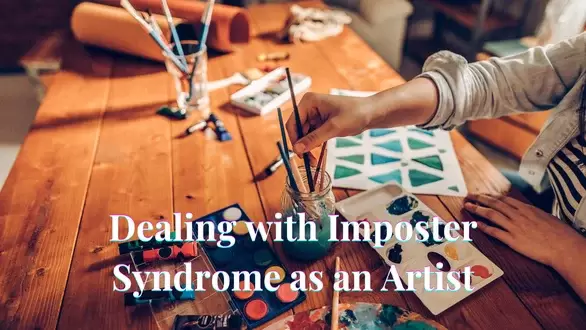
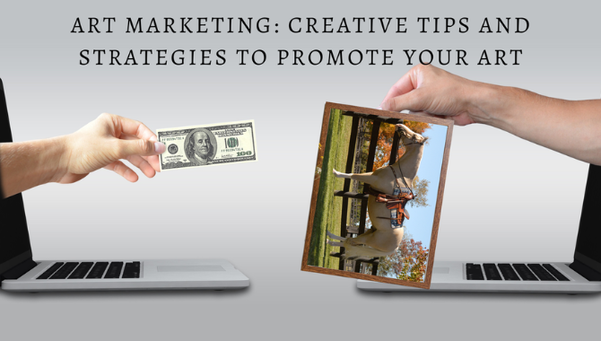
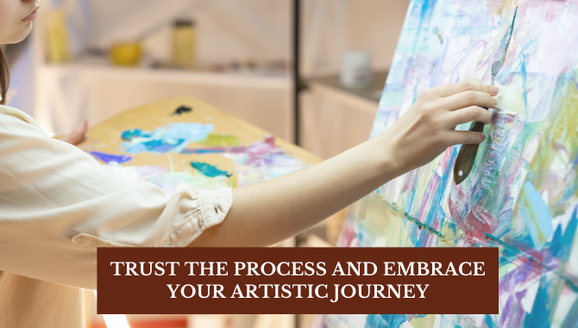
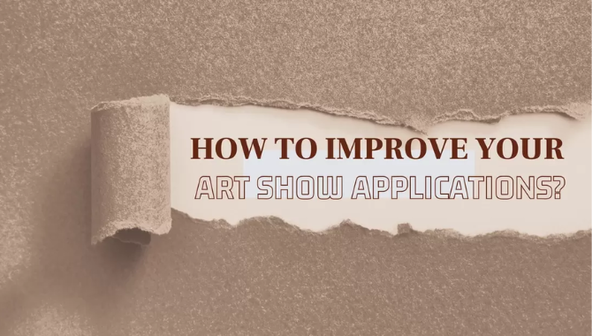
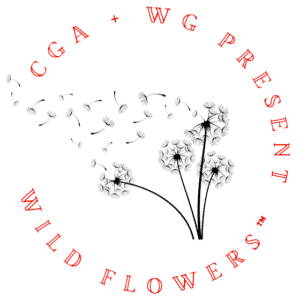
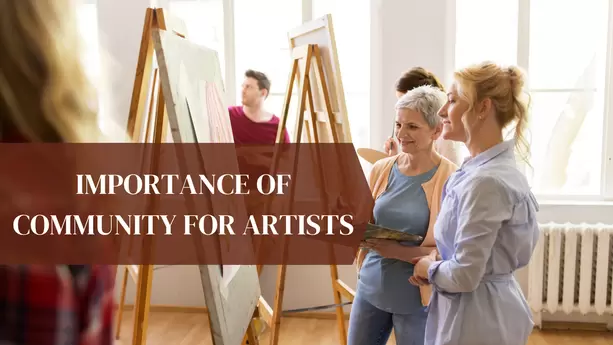
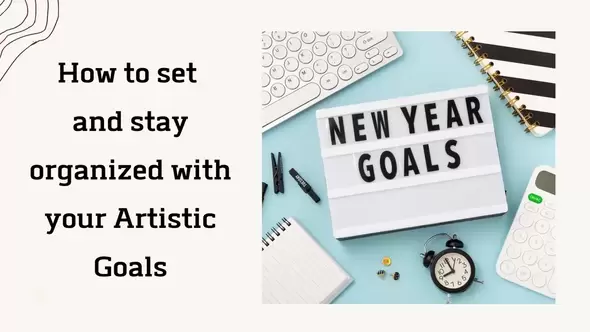
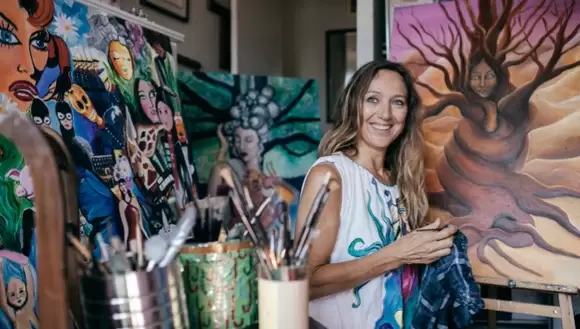
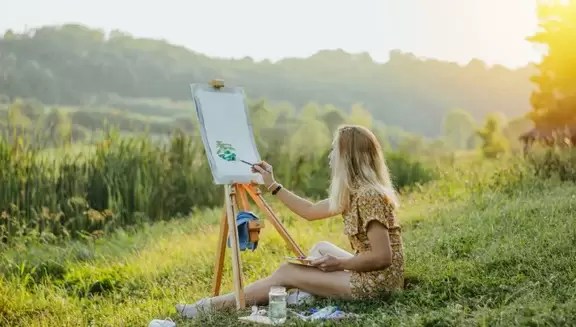
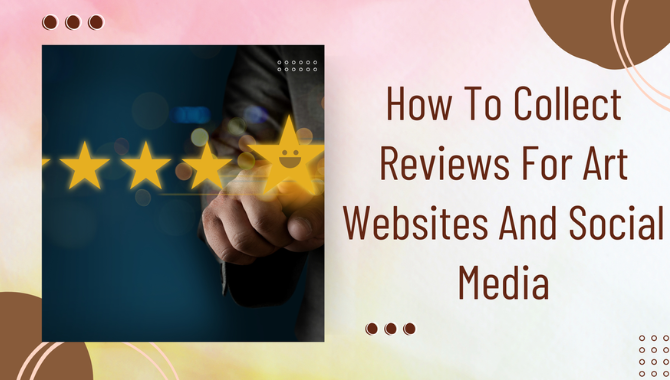
 RSS Feed
RSS Feed